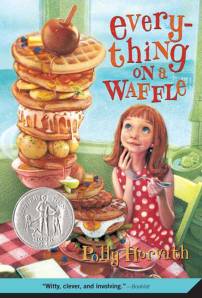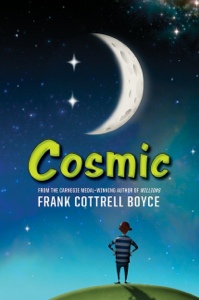 Flora Belle Buckman knows better than to hope. Already a confirmed cynic (her mother says so), ten-year-old Flora has adopted the very helpful comic book feature, Terrible Things Can Happen to You, as her guidebook. Its often-repeated advice, “Do not hope; instead, observe,” has proven especially useful, rescuing her from the perils of hope and reminding her that acting on what she sees and hears is much more reliable. Observation tells her that her mother loves Mary Ann, the shepherdess lamp, more than she does Flora, for example, and allows Flora to behave accordingly.
Flora Belle Buckman knows better than to hope. Already a confirmed cynic (her mother says so), ten-year-old Flora has adopted the very helpful comic book feature, Terrible Things Can Happen to You, as her guidebook. Its often-repeated advice, “Do not hope; instead, observe,” has proven especially useful, rescuing her from the perils of hope and reminding her that acting on what she sees and hears is much more reliable. Observation tells her that her mother loves Mary Ann, the shepherdess lamp, more than she does Flora, for example, and allows Flora to behave accordingly.
The problem is, there seems to be a lot of hopefulness around Flora lately. First there was the squirrel, Ulysses, who survived being vacuumed up and gained amazing superhero powers, like flying and the ability to type poetry. He’s always hopeful about something, and he loves Flora more than any lamp, and possibly more than giant donuts. Then the annoying William Spiver showed up next door; he seems to be setting a lot of his hopes on being Flora’s friend. Even her father, quite possibly the world’s loneliest man, seems to be feeling hopeful, what with everything that’s been going on. And Dr Meescham ignores Flora’s favourite advice entirely, hoping always that something wonderful will happen, even when it doesn’t. Even when terrible things happen instead.
Will seal blubber be enough to help a young cynic hold out against so much hopefulness?
DiCamillo has a knack for blending Douglas Adams’s casual absurdity with a fair amount of heart. Add two children with vocabularies that are impressive, but never unexplained, a nod to the grammar-sensitive, and a poetry-loving squirrel you can’t help but love, and you have a story that will appeal particularly to those of us with a bit of a nerdy bent.
Find other reviews at the New York Times, A Rogue Librarian’s Reading List, and Fuse #8.
Discover the Flora and Ulysses origin story in this article from Publishers Weekly.







